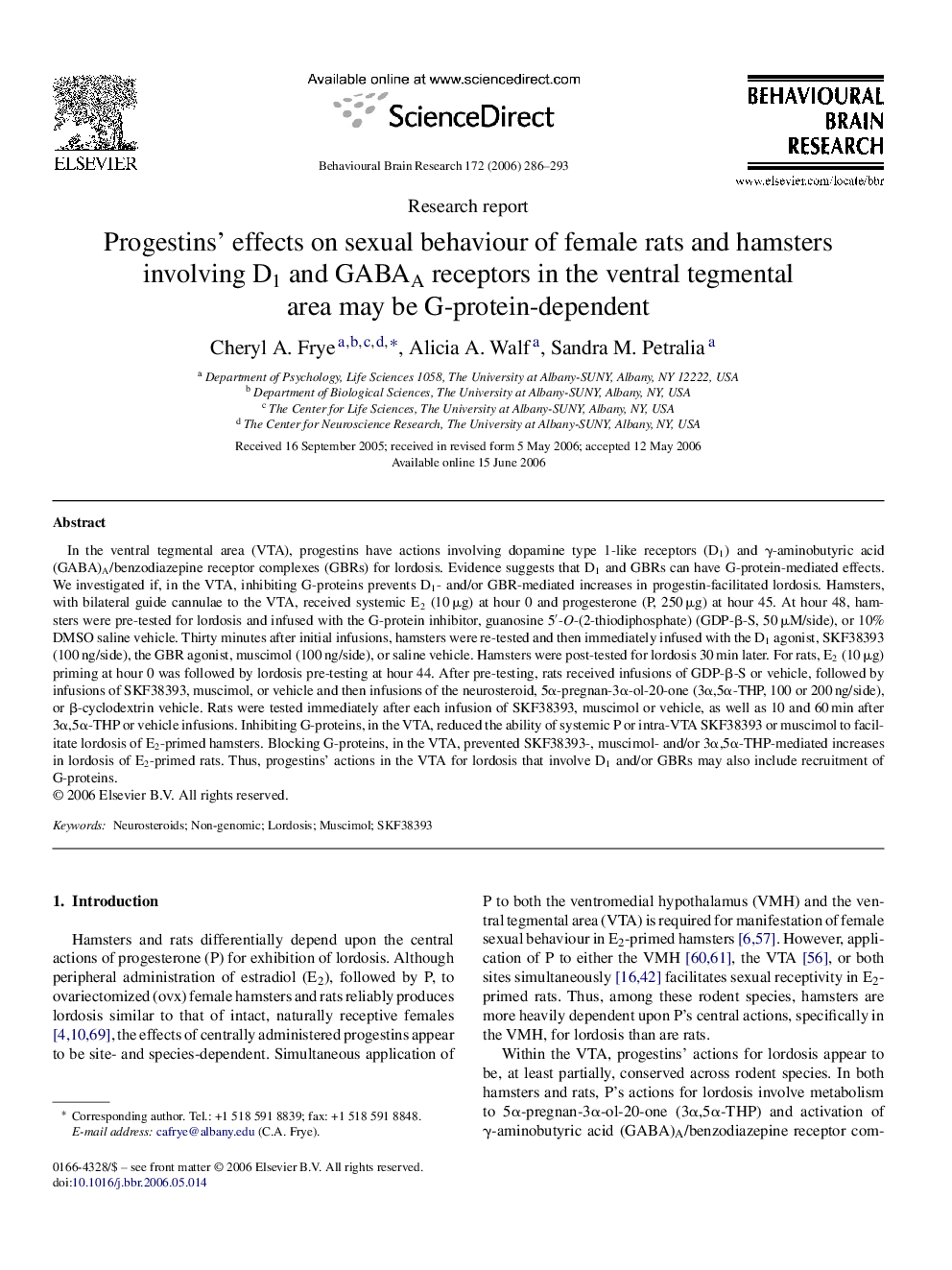| Article ID | Journal | Published Year | Pages | File Type |
|---|---|---|---|---|
| 4316172 | Behavioural Brain Research | 2006 | 8 Pages |
In the ventral tegmental area (VTA), progestins have actions involving dopamine type 1-like receptors (D1) and γ-aminobutyric acid (GABA)A/benzodiazepine receptor complexes (GBRs) for lordosis. Evidence suggests that D1 and GBRs can have G-protein-mediated effects. We investigated if, in the VTA, inhibiting G-proteins prevents D1- and/or GBR-mediated increases in progestin-facilitated lordosis. Hamsters, with bilateral guide cannulae to the VTA, received systemic E2 (10 μg) at hour 0 and progesterone (P, 250 μg) at hour 45. At hour 48, hamsters were pre-tested for lordosis and infused with the G-protein inhibitor, guanosine 5′-O-(2-thiodiphosphate) (GDP-β-S, 50 μM/side), or 10% DMSO saline vehicle. Thirty minutes after initial infusions, hamsters were re-tested and then immediately infused with the D1 agonist, SKF38393 (100 ng/side), the GBR agonist, muscimol (100 ng/side), or saline vehicle. Hamsters were post-tested for lordosis 30 min later. For rats, E2 (10 μg) priming at hour 0 was followed by lordosis pre-testing at hour 44. After pre-testing, rats received infusions of GDP-β-S or vehicle, followed by infusions of SKF38393, muscimol, or vehicle and then infusions of the neurosteroid, 5α-pregnan-3α-ol-20-one (3α,5α-THP, 100 or 200 ng/side), or β-cyclodextrin vehicle. Rats were tested immediately after each infusion of SKF38393, muscimol or vehicle, as well as 10 and 60 min after 3α,5α-THP or vehicle infusions. Inhibiting G-proteins, in the VTA, reduced the ability of systemic P or intra-VTA SKF38393 or muscimol to facilitate lordosis of E2-primed hamsters. Blocking G-proteins, in the VTA, prevented SKF38393-, muscimol- and/or 3α,5α-THP-mediated increases in lordosis of E2-primed rats. Thus, progestins’ actions in the VTA for lordosis that involve D1 and/or GBRs may also include recruitment of G-proteins.
